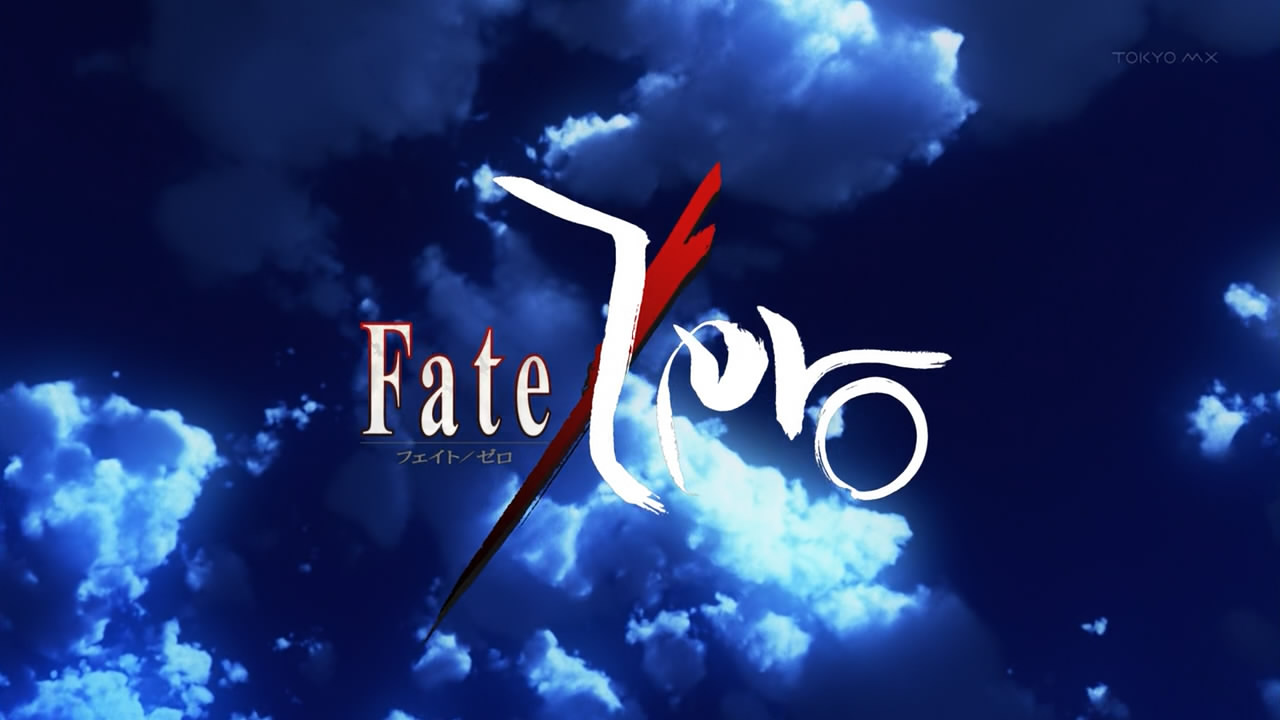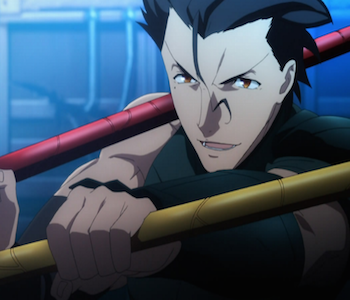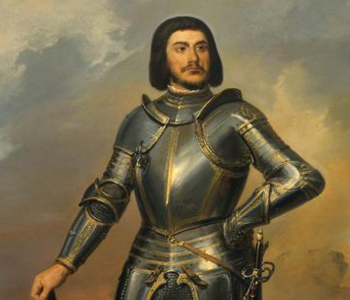Where did the idea for the Fate/Zero servants come from?

Fate/Zero tells the story of an epic battle in the form of the Fourth Grail War between heroic spirits based on legendary people from history. But just how accurate are these portrayals of the Fare/Zero characters when compared to their historical counterparts?
Come meet the legends that served as inspirations for the servants of Fate/Zero.
Assassin - Hassan-i-Sabbah


In this iteration of the Grail War, the role of the Fare/Zero servant Assassin (above left) is taken by the legendary Persian "Old Man of the Mountain," Hassan-i-Sabbah (above right). In the anime, Assassin is portrayed not as a single servant, but as a collection of separate personalities and entities through his "division" noble phantasm. Thanks to this multiplicity and his ability to avoid detection, Assassin is used by his master, Kirei Kotomine, as a sort of intelligence network to spy on rival masters and collect information.
But just how true to life is this portrayal of Hassan? In reality, this figure was a scholar and missionary who engaged in relatively few violent incidents or battles. He converted to Islam in his late teens, and went on to spread the word of the Quran during his travels through Persia. He was widely respected as a devoted follower of Islam who also pursued studies in philosophy, mathematics, alchemy, and other major sciences. Later in his life, Hassan captured a castle in modern-day Qazvin, known as the Alamut. What is most remarkable, however, is that he accomplished this feat with relatively little violence, and instead won the locals to his side through gradual infiltration before purchasing the fort. The greatest link between this man and the multiple Assassin Fate/Zero servants falls in the organization Hassan founded that later spread throughout Iran and Syria: a group called Hashshashin or Assassins. It is likely that the "division" noble phantasm of the Assassins in Fate/Zero is a sort of reinterpretation of this famous group.
Lancer - Diarmuid Ua Duibhne


The Fare/Zero servant Lancer (above left) is ostensibly a portrayal of the legendary Irish knight of Fianna, Diarmuid Ua Duibhne (above right). In the anime, Lancer wields a long red spear, Gae Dearg, capable of slicing through mana, and a short yellow spear, Gae Buidhe, that creates unhealable wounds. He is also cursed with a "love spot" in the form of a mole under his right eye that enchants women and causes them to fall in love with him. In terms of personality, Lancer is utterly devoted to both his Master, Kayneth El-Melloi Archibald, and to his code of honor and chivalry.
All of these traits line up very well with the original legend of Diarmuid. He was a proficient soldier who owned both the yellow and red spears Gae Buidhe and Gae Dearg (though their abilities were somewhat altered for the anime), and he was cursed with a love spot somewhere on his face said to woo women. This curse is the ultimate cause of Diarmuid's death, as his lord Fionn's fiance, Gráinne, falls in love with the younger, more handsome knight. Ultimately, Fionn is forced to forgive both Diarmuid and Gráinne, but when the two men go hunting together and Diarmuid is mortally wounded by a boar, Fionn intentionally lets his rival die. Although this tragic backstory is only hinted at with subtle flashbacks in the anime, Fate/Zero gives a fairly accurate representation of the first knight of Fianna.
Rider - Alexander the Great


The Fate/Zero servant Rider (above left) is designed to be the famous Alexander the Great (above right), or Iskandarnamah in Persian. In the anime, he "serves" the diminutive and inexperienced Waver Velvet, though Rider himself seems to call most of the shots. He is an extraordinarily big man, both in stature and personality, and he believes in doing everything to the fullest, whether that be fighting in war or enjoying the simpler pleasures of life. His philosophy during his time as a king was to live a life that his followers could envy and seek to emulate, thus earning their service and adoration even after death in the form of his Noble Phantasm, the Ionioi Hetairoi, a reality marble in which his fallen troops are resurrected to fight again at his side.
The real Alexander the Great was also an inspirational general and leader, known for his brilliant military strategy and fair treatment of his subjects. Like Fate/Zero's Rider, he was obsessed with finding the edge of the world, but was forced to give up on that dream at the behest of his troops. Alexander was more of a scholar than his animated counterpart: he studied under the tutelage of Aristotle until the age of sixteen, and was especially interested in the heroic epics of Homer. That being said, he was just as proud and rash as Rider, known for having a competitive streak, and said to have believed himself to be the son of Zeus, destined to conquer the world.
Caster - Gilles de Rais


Fate/Zero's Caster (above left), a reincarnation of Gilles de Rais (above right), and his master, Ryuunosuke Uryuu, are likely the two most reviled (yet paradoxically lovable) Fate/Zero characters, known for messily slaughtering children, then philosophizing about God's love for mankind in the next moment. Caster especially takes pleasure in these numerous atrocities, seeing them as a way to woo Saber, whom he mistakenly believes to be Joan of Arc. He wields a cursed grimoire as his noble phantasm, capable of summoning huge numbers of demons to do his bidding.
But surely such a deranged man could not have truly existed in our world? Wrong, unfortunately. Gilles de Rais was a French nobleman of the fifteenth century, who served as a commander in the Royal Army and fought alongside Joan of Arc against the English during the Hundred Years' War. After his military career, Gilles took up less tasteful hobbies: kidnapping, sodomizing, and murdering children. He was convicted of these murders and accused of dabbling in the occult in 1440, and was hanged thereafter by the French authorities.
Archer - Gilgamesh


Archer (above left) is one of the most arrogant of all Fate/Zero characters, modeled after the Sumerian legend Gilgamesh (above right). In the anime, this Fate/Zero servant betrays his original master, Tokiomi Toosaka, whom he sees as boring and conventional, in favor of the more intriguing Kirei. He wields thousands of noble phantasm weapon projectiles from his treasury, known as the Gates of Babylon, and it is this sheer number of powerful resources that makes him such a formidable opponent.
The real-life Gilgamesh was likely a king of Sumer who reigned sometime between 2800 and 2500 BC, but in the stories set down on tablets after his time, he was decreed to be a demigod capable of great acts of heroism and courage. These tablets make up "The Epic of Gilgamesh," a legend that is widely considered the first great work of literature. In the Epic, Gilgamesh goes on many series of adventures during his reign as king of Sumer, and even gains a beloved friend in the form of Enkidu - a man created by the gods to rid Gilgamesh of his arrogance. After the two fight, both to the very best of their superhuman abilities, they become fast friends until Enkidu's tragic death. After the loss of his beloved friend, Gilgamesh goes on many quests in an attempt to discover immortality and escape Enkidu's fate. Little reference is made to this king's wealth and obsession with gathering treasures - a great passion of Fate/Zero's Archer. If anything, the Gilgamesh of legend is more obsessed with eternal life than anything else.
Berserker - Sir Lancelot du Lac


Berserker (above left) and his master, Kariya Matou, both start as good men with noble intentions who are eventually driven to insanity. Berserker's true identity is Sir Lancelot du Lac (above right), a trusted friend of Saber in life and a Knight of the Round Table. However, he is summoned under the effect of his Mad Enhancement, and remains incapable of rational thought and speech. The only trace of his formal self is his seemingly unadulterated hatred for Saber, as he targets her exclusively in almost every fight.
But why did the great Sir Lancelot feel such a hatred for his former king? The answer is only hinted at during the anime, but the true legend of Lancelot sheds some light.
In life, King Arthur married the Lady Guinevere, who later had an affair with Lancelot. Instead of condemning this affair and punishing his friend or his wife, the King did nothing and merely forgave them both. However, this affair helps spur a rebellion against King Arthur, led by his nephew, Mordred, which destroys the kingdom. In the anime, Lancelot could never forgive himself and desired Arturia's punishment, which he received in their final duel before declaring that she was the best king any knight could have asked for.
Saber - King Arthur Pendragon


Saber (above left) is likely the servant out of all the Fate/Zero characters that creators took the most liberty with, given that they gender-bended the legendary King Arthur (above right) to create her! In the anime, Arturia Pendragon is summoned as the Saber servant to Kiritsugu Emiya, much to the surprise of her master and his wife. Despite their initial surprise, Kiritsugu and his team do discover and appreciate Saber's excellent fighting skills and battlefield tactics, though her and Kiritsugu's personalities often clash. While Saber holds the codes of chivalry and honor above all else in the war, Kiritsugu fights unashamedly, often using deceptive and underhanded methods to achieve his goals. Despite this, the two greatly desire the Grail and fight effective as a team with Saber on the front lines and Kiritsugu in the shadows.
King Arthur's story, however, is somewhere between the realms of fact and fiction, and his historical existence remains disputed. The most popular literature surrounding the king is Geoffrey of Monmouth's "Historia Regum Britanniae" (The History of the Kings of Britain) from the early twelfth century. The Historia tells of Arthur's conception out of wedlock, as well as his ascendancy and kingship. During his reign, he soundly defeated the invading Saxons and began a hugely successful military campaign. During these battles, however, Arthur's nephew seduces his wife, Guinevere, and seizes the throne of Britain with the support of some Knights of the Round Table (most notably Lancelot). Although Arthur successfully quells the rebellion and slays Mordred, he is fatally wounded and dies soon after. The Saxons, seizing the opportunity, re-engage in wars against Britain, eventually ending the line of British Kings. We see an interpretation of this story play out in Fate/Zero, though a far larger role is given to Lancelot than to Mordred, but Saber's sense of responsibility and guilt over the fate of her kingdom are clear in light of this legend.
And there you have it! While the Fate/Zero creators may have taken some liberties in making the servants, they all do have some ties to Western history and mythology! Please be sure to check out there series to find out who wins in this battle royale between legends.




